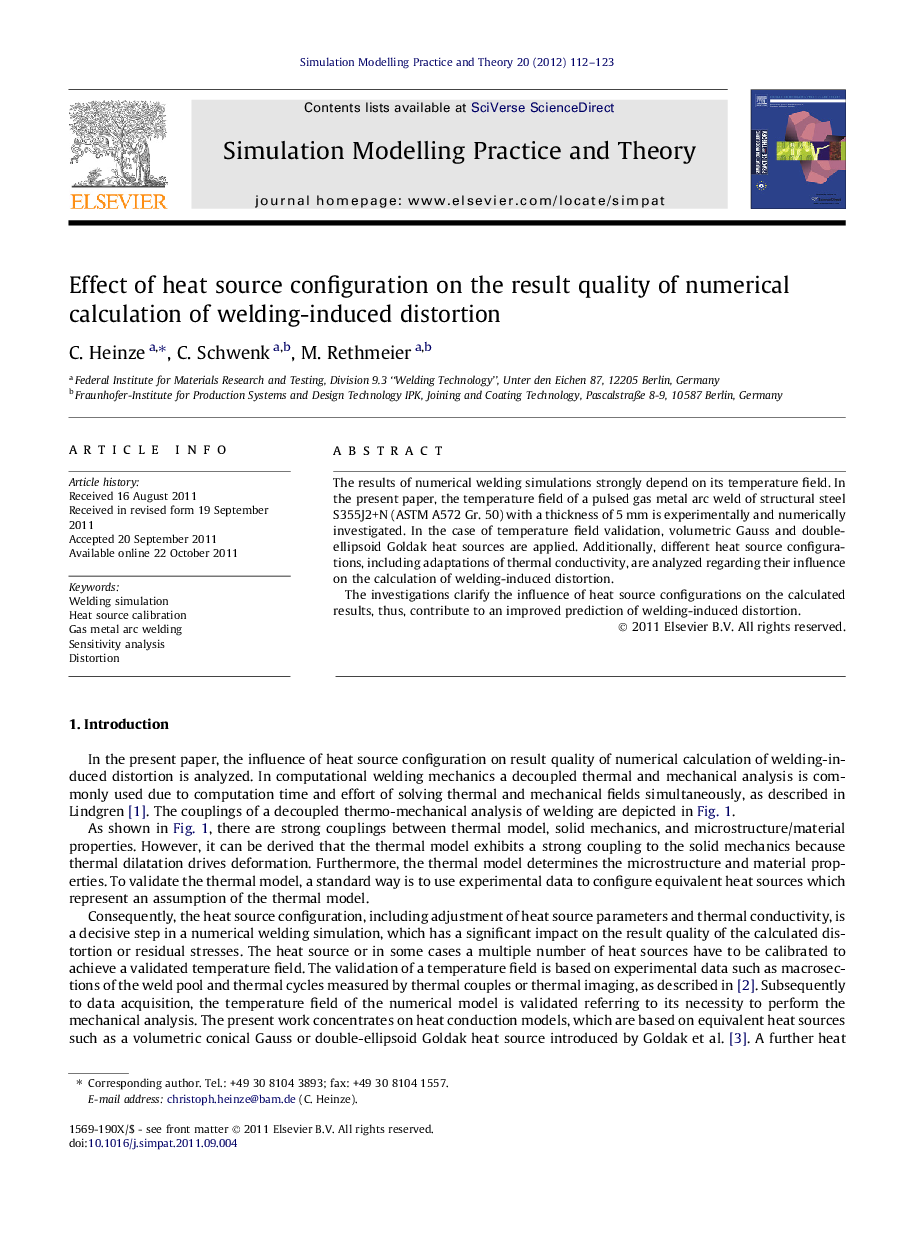| Article ID | Journal | Published Year | Pages | File Type |
|---|---|---|---|---|
| 492281 | Simulation Modelling Practice and Theory | 2012 | 12 Pages |
The results of numerical welding simulations strongly depend on its temperature field. In the present paper, the temperature field of a pulsed gas metal arc weld of structural steel S355J2+N (ASTM A572 Gr. 50) with a thickness of 5 mm is experimentally and numerically investigated. In the case of temperature field validation, volumetric Gauss and double-ellipsoid Goldak heat sources are applied. Additionally, different heat source configurations, including adaptations of thermal conductivity, are analyzed regarding their influence on the calculation of welding-induced distortion.The investigations clarify the influence of heat source configurations on the calculated results, thus, contribute to an improved prediction of welding-induced distortion.
